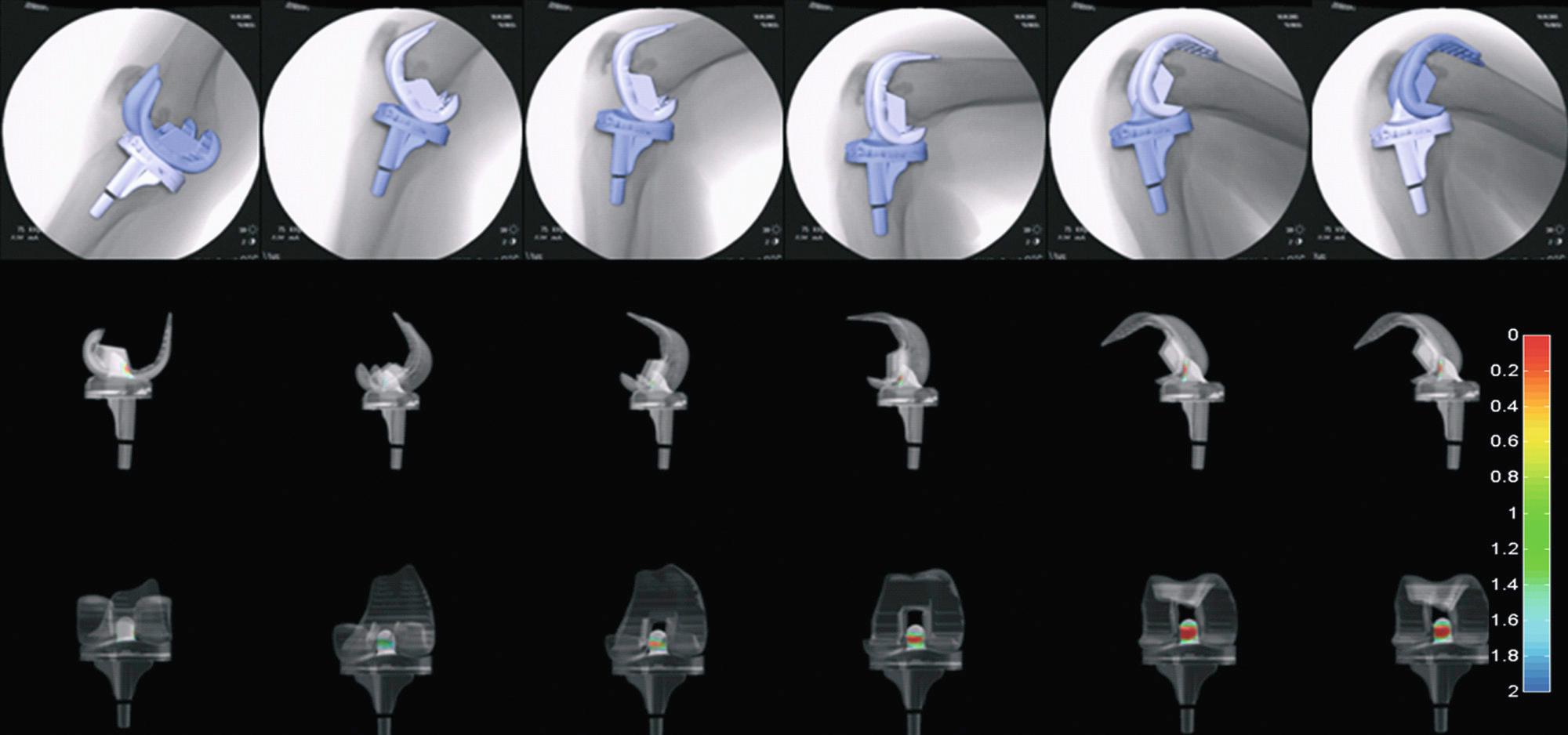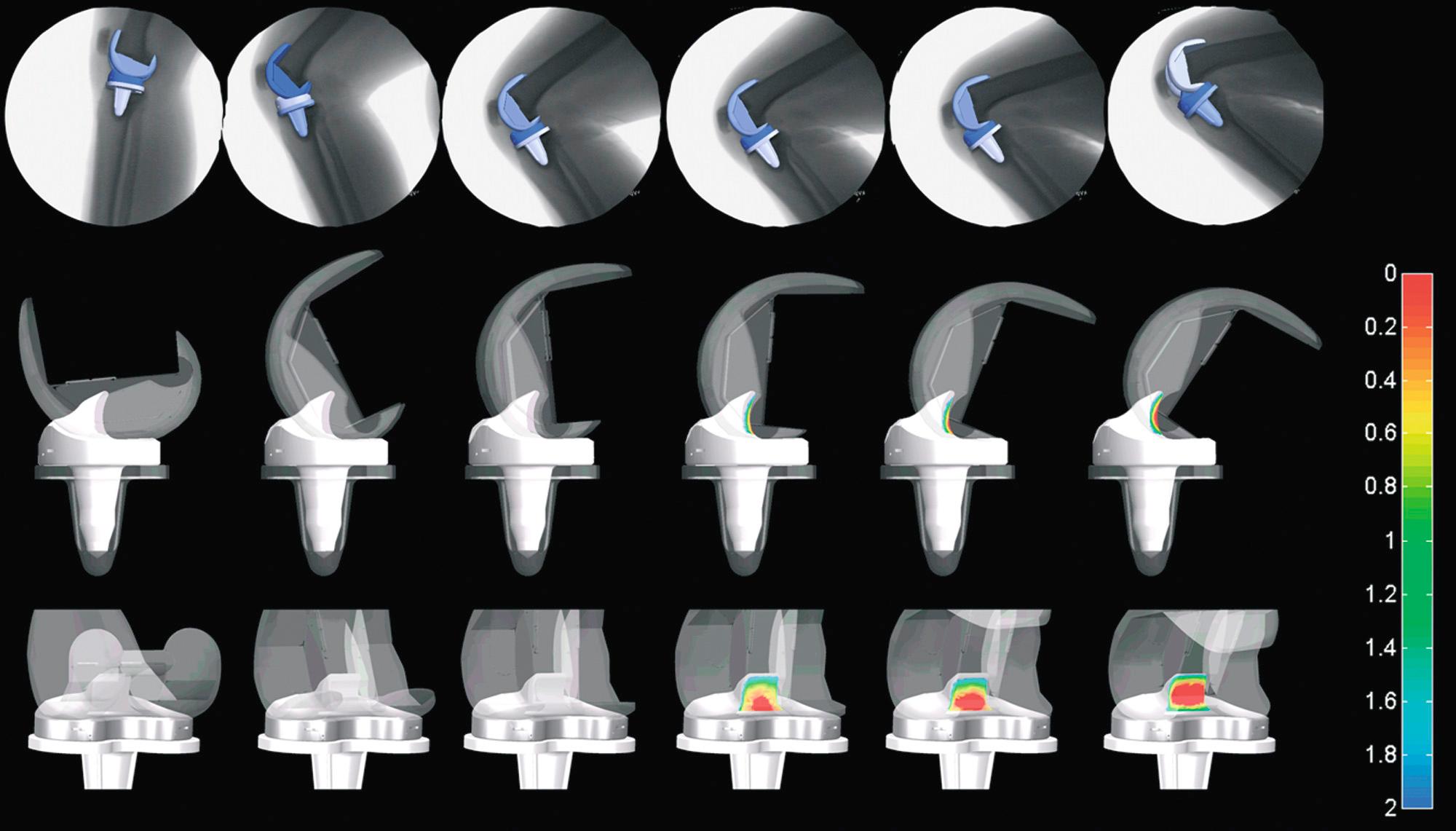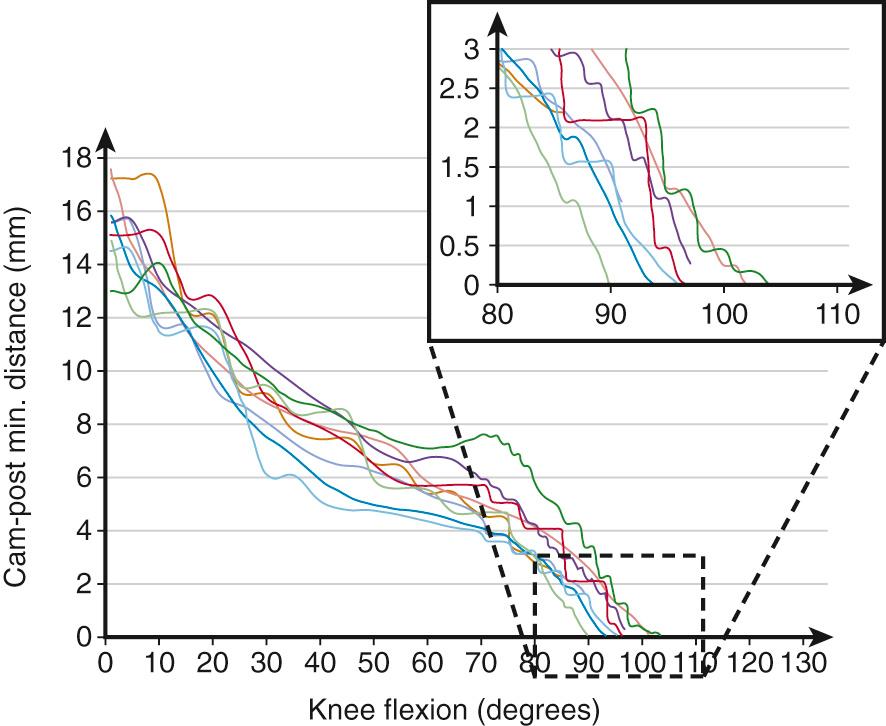Physical Address
304 North Cardinal St.
Dorchester Center, MA 02124
Knee joint injuries are among the most prevalent musculoskeletal problems, and there are a number of potential reasons for these injuries. In younger adults, sports tend to be a major cause of injury, whereas arthritic degeneration, such as rheumatoid arthritis and osteoarthritis, tend to affect older adults. Traumatic injuries acquired as young adults tend to exacerbate degenerative injuries later in life. To restore function and quality of life, many patients elect to undergo a total knee arthroplasty (TKA). There are currently more than 150 TKA designs on the market using principles developed by physicians and engineers to simulate the geometry and function of a healthy knee joint. All of these designs collectively tend to have four main differences, which are (1) condyle geometry, (2) bearing mobility, (3) ligament preservation versus substitution, and (4) fixation technique.
Evaluating these various designs in human subjects is inherently difficult because all measurements must be noninvasive to limit interference with joint function. Because cadaver tests fail to adequately simulate in vivo joint conditions, researchers are constantly striving to develop novel methods for indirectly measuring joint mechanics in vivo. These methods have been used to evaluate the normal knee and justify design protocols of TKAs.
X-rays, computed tomography (CT), and magnetic resonance imaging (MRI) are common imaging techniques for discerning joint condition; however, they typically detect gross injuries and are unable to identify early-stage pathology. Arthroscopy overcomes the insufficiencies of the imaging modalities mentioned earlier, yet the procedure itself is semi-invasive. For this reason, there is a need for the development of a noninvasive evaluation technique with the ability to diagnose joint conditions in the early-stage onset of disease. One such promising technology involves the analysis of vibration signals from the knee joint during activities of daily living. Further developments of this technology may one day provide physicians with the information to expand treatment options prior to a TKA and eventually phase out the procedure altogether. Therefore while discussing knee joint mechanics, a discussion of these innovative assessment techniques becomes imperative. The aim of this chapter is to provide the reader with background related to knee joint kinematics and kinetics, along with an investigation into the use of vibrational signals as a diagnostic tool.
Kinematics is the study of the pure motions and can be used to describe and understand the movements of the knee. There are several techniques that have been used to determine both in vivo and in vitro kinematics for normal and implanted knees. These invasive methods include cortical pins and roentgen stereophotogrammetric analysis. Noninvasive methods include skin marker analysis and fluoroscopy-based model reconstruction. This section will focus on kinematics from fluoroscopic evaluation because it is both accurate and noninvasive.
In vivo fluoroscopic studies of the normal knee have shown that knee kinematic patterns are primarily determined by the condylar geometry of the articulating surfaces and the surgical accuracy of aligning these components. In addition, those studies have revealed what is referred to as the screw-home mechanism, in which the lateral condyles experience substantially more posterior motion than the medial condyle throughout flexion.
Engineers and surgeons collaborate in an effort to develop TKA systems that reproduce more normal-like kinematic knee function. Fluoroscopic studies have documented that many implant designs demonstrate kinematics that are less predictable and less reproducible following a TKA procedure. Numerous kinematic variances from normal knee kinematic patterns have been demonstrated, including paradoxical anterior femoral translation during deep knee flexion, reverse axial rotational patterns, and femoral condylar liftoff.
Anterior femoral translation during deep knee flexion occurs when the femoral component slides anteriorly during deep flexion rather than rolling posteriorly. One of the consequences is the anteriorization of the flexion axis, leading to posterior impingement of the components and/or soft tissue and a reduction in the quadriceps moment arm, resulting in reduced quadriceps efficiency. In addition, anterior sliding of the femoral component on the tibial polyethylene surface risks accelerated polyethylene wear. Some TKAs have shown the tendency to produce axial rotation opposite of the normal knee. This rotation risks patellofemoral instability by lateralizing the tibial tubercle and increasing the Q angle during deep flexion. Because of reduced posterior femoral rollback (PFR) of the lateral femoral condyle, maximum knee flexion is also reduced.
Despite these limitations, TKAs have provided good midterm to long-term survivability; however, the question on which type of implant configuration provides the best postsurgical outcome is still a cause for debate. Bearing mobility is one such area of contention. The mobile-bearing implant was designed to reduce contact stress (thereby reducing wear) and to recreate more normal-like knee kinematics. Although in vitro studies have shown reduced wear with the use of a mobile-bearing implant, in vivo metrics (such as kinematics, clinical outcomes, and survivability between fixed- and mobile-bearing implants) have produced similar results. A study conducted by Post et al. did not find any basis to justify one design over the other. Clinical success and long-term survivorship were found to be mainly dependent on component placement accuracy, and Post et al. concluded that the best result is achieved when the surgeon is comfortable with a design and can implant that design consistently. Studies have compared the performance of the mobile and fixed configurations in the same patient and concluded that the patient does not demonstrate any difference in terms of range of motion, knee scores, and survivorship. Pagnano et al. conducted a study on 240 rotating-platform TKAs, finding that patellar tracking was not improved. A multicenter study conducted by Wasielewski et al. on 527 mobile-bearing TKAs found that 12% of the knees exhibit more than 10 degrees of axial rotation during a deep knee bend (DKB) activity and almost half the knees analyzed experienced less than 3 degrees of axial rotation. Rotational parameters were also found to be comparable with results reported for fixed-bearing TKAs by Dennis et al. LaCour et al., in a 10-year follow-up study, documented that overall rotation of the mobile bearing component remained with the femoral component throughout flexion and this finding is retained long term.
Retaining or substituting the posterior cruciate ligament is another area of importance in TKA design. Numerous studies have shown that certain cruciate-retaining (CR) total knee designs exhibit paradoxical femoral sliding instead of posterior femoral rollback, which decreases clinical weight-bearing flexion. This paradoxical anterior sliding is not seen in posterior-stabilized (PS) TKAs. A study comparing PS TKAs with CR TKAs with asymmetrical condyles found that the CR designs exhibit lesser medial PFR; both designs achieve similar amounts of lateral PFR. Proponents of the CR design suggest that the PFR seen in PS TKAs originates from the guided motion when by the cam-post engages; this leads to higher rates of implant failure because of cam-post wear. Bourne and Baré in their discussion of failure of the cam-post mechanism found substantial differences among cam-post mechanisms between implant types; they suggested that the cam-post mechanism does not always engage as designed. They also concluded that the cam-post mechanism may result in increased wear; however, this analysis was limited to implants with varus-valgus constraints.
In a study performed to estimate cam-post engagement during a DKB activity for 10 knees with a fixed-bearing bicruciate-stabilizing (BCS) design and 9 knees with a high-flexion mobile-bearing PS design. In vivo, weight-bearing knee kinematics are reported for the participants while they perform a DKB activity under fluoroscopic surveillance. The three-dimensional kinematics are recreated from the fluoroscopic images using a previously published three-dimensional to two-dimensional registration technique. Four metal beads are embedded into the polyethylene insert prior to the replacement surgery to determine the polyethylene insert location and orientation for the mobile-bearing design. Images from full extension to maximum flexion are analyzed at 10-degree intervals, thus recreating the three dimensional kinematics, leading to a better understanding of the cam-post mechanism. The distance between the interacting surfaces is monitored throughout flexion, and the predicted contact map is calculated. The mechanism is considered engaged when the minimum distance between the cam and post surfaces becomes zero.
This method has also been used to compare the cam-post mechanics for BCS and fixed bearing PS TKA designs. It is important to note that the BCS TKA design has both an anterior cam-post mechanism, which remains engaged at full extension and disengages in early flexion, as well as a posterior cam-post mechanism that disengages in full extension and engages deeper in flexion. This analysis focuses exclusively on the posterior cam-post mechanism. With respect to the BCS design, the cam-post engagement varied among patients, with the average flexion for engagement being 34.0 degrees ( Fig. 21.1 ) and a highly variable range of 15 to 68 degrees of flexion. The typical contact pattern for most subjects shows initial contact with the tibial post medially, with the contact location moving centrally and superiorly with increasing knee flexion. For the mobile-bearing PS design the cam-post interaction is found to be very consistent among subjects ( Fig. 21.2 ), and the stabilizing cam-post mechanism engages in deeper flexion (between 90 and 105 degrees). After the two components engage, they remain in contact until maximum flexion is achieved ( Fig. 21.3 ). Unlike the fixed-bearing BCS design, the contact between the cam and post for the mobile-bearing PS design is located centrally on the post at all times when engaged. This behavior is believed to be because of the mobility of the polyethylene insert, which rotates axially in accord with the rotating femur. Because the posterior surface of the mobile-bearing post remains parallel to the surface of the femoral cam, contact stresses on the polyethylene tibial post are more evenly distributed. Decreasing contact forces can increase the longevity of the implant. Such loading conditions are more difficult to replicate for a fixed-bearing TKA, in which external rotation of the femoral component may cause the cam-post mechanism to engage more medially. This increases the edge loading on the polyethylene, as was seen with the BCS design. Because the mobile insert ensures that the cam and post are parallel to each other, contact between them occurs centrally, hence reducing the chances of asymmetrical loading conditions, as seen in the fixed-bearing design. The results from this study are in accordance with the findings of Bourne and Baré cited earlier and also suggest that mobile-bearing PS designs may have an advantage when compared with their fixed-bearing counterparts in terms of long-term survivability.



In addition to bearing mobility and ligament retention, advances in imaging and manufacturing technology have led to commercially available personalized TKA designs. Most TKA designs have a wide array of sizes and variants that are chosen to best match the patient. Personalized TKAs replicate a patient's individual femoral and tibial geometric features, and the design rationale is that doing so will allow for a better reconstruction of the mechanical axis and ultimately lead to more normal kinematics. Studies are currently under way to evaluate the mechanics of the personalized TKA, and early results are promising with respect to the ability to replicate kinematics similar to the normal knee.
Become a Clinical Tree membership for Full access and enjoy Unlimited articles
If you are a member. Log in here